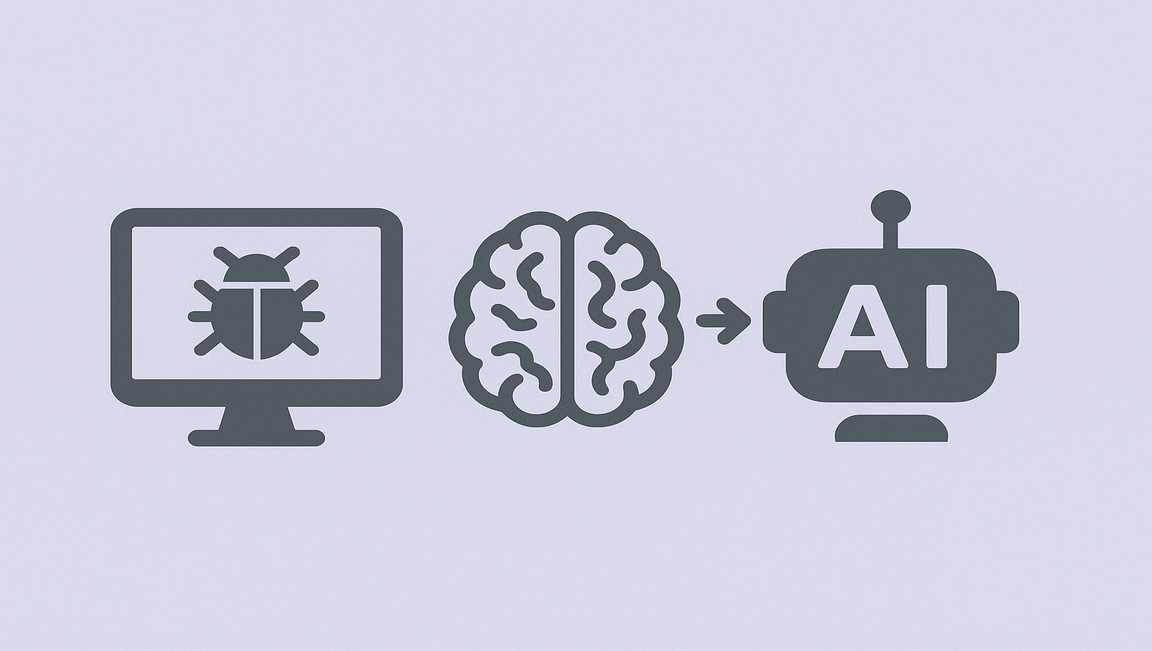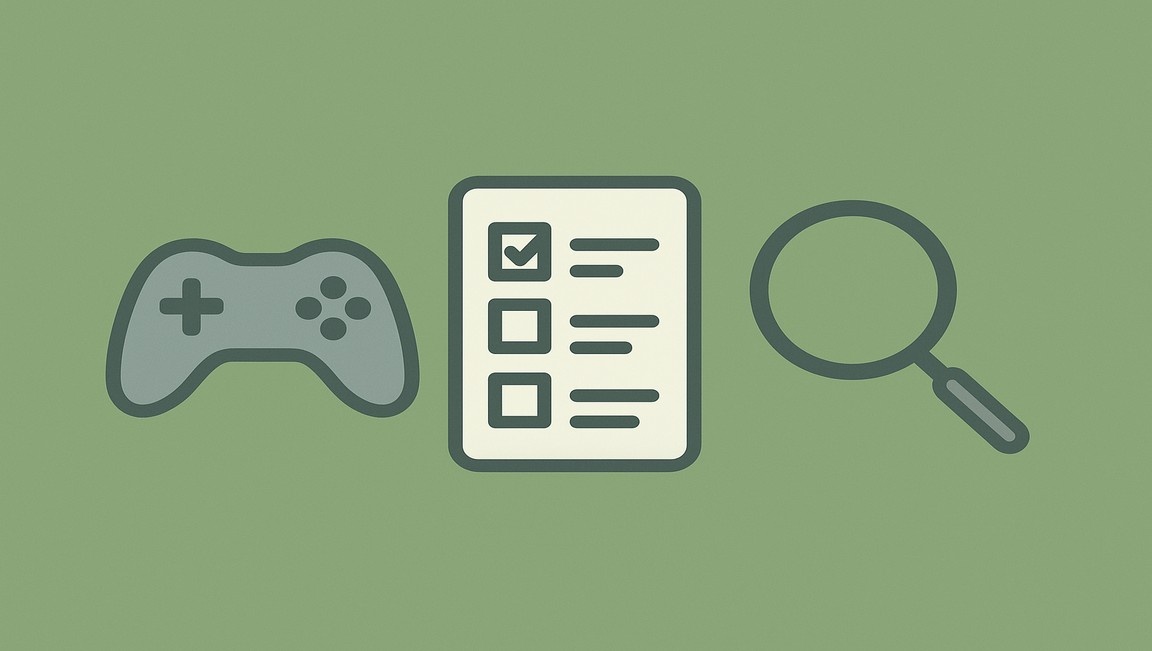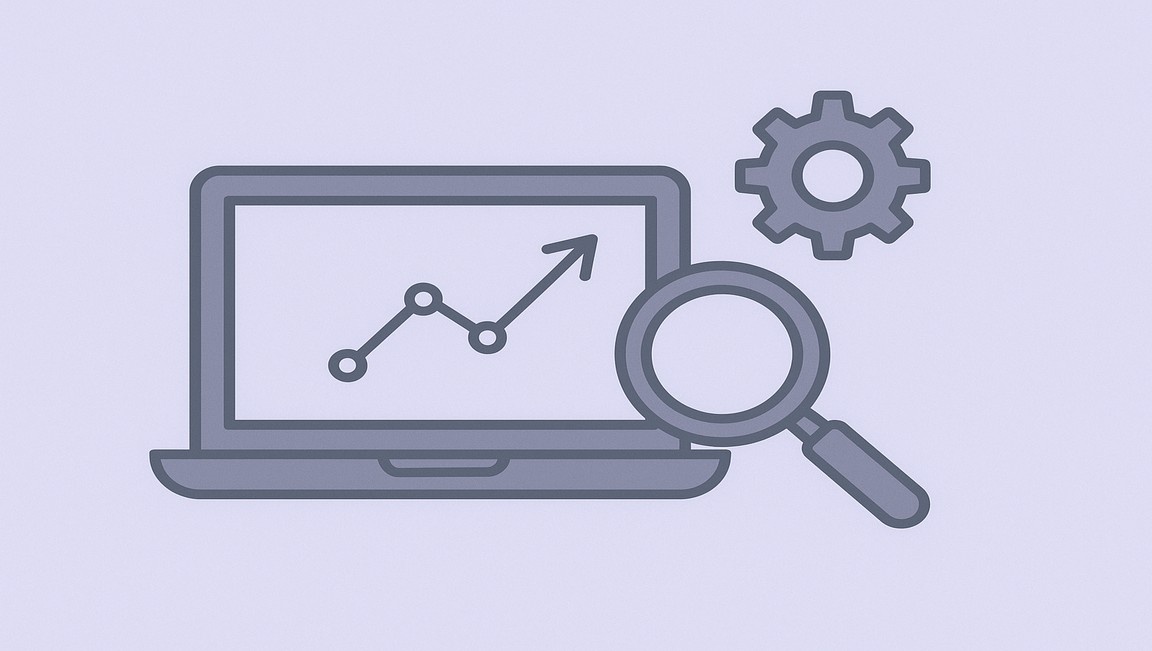Table of content
SHARE THIS ARTICLE
Is this blog hitting the mark?
Contact Us
Table of Contents
- Will AI Replace Software Testers? The Reality of Augmentation Over Replacement
- The Augmentation Paradigm: What AI Actually Does
- The Irreplaceable Human Element: Where AI Falls Short
- The Evolution of Testing Roles: From Executor to Strategist
- New Responsibilities: Testing AI Systems Themselves
- The Hybrid Human-AI Testing Model
- Quantifying the Impact: Productivity and ROI
- Skills for the AI Augmented Future
- Market Dynamics and Enterprise Adoption
- Implementation Challenges and Considerations
- The Path Forward: Practical Recommendations
- Conclusion: A Future of Collaboration, Not Replacement
Will AI Replace Software Testers? The Reality of Augmentation Over Replacement
The question "Will AI replace software testers?" has dominated industry discussions throughout 2025, creating widespread anxiety among QA professionals. However, extensive research and real-world implementations reveal a fundamentally different reality: AI is not replacing software testers—it is augmenting them, creating new opportunities and elevating the profession to unprecedented strategic importance.
According to Gartner's groundbreaking 2024 report, by 2027, 80% of enterprises will integrate AI-augmented testing tools into their software engineering toolchain, representing a monumental leap from the mere 15% adoption rate observed in early 2023. Yet despite this explosive growth, the U.S. Bureau of Labor Statistics predicts that jobs for software developers, quality assurance analysts, and testers will grow at a "much faster" rate than the average of all occupations from 2023 through 2033, crediting AI, in part, for driving this increase.
This apparent paradox—simultaneous AI adoption and job growth—reveals the fundamental transformation occurring in software testing: AI is handling repetitive execution while human testers are being elevated to quality strategists, risk advisors, and AI system validators.
The Augmentation Paradigm: What AI Actually Does
AI's transformative impact on software testing centers on automating the mundane while amplifying human expertise. Modern AI-powered testing tools deliver capabilities that fundamentally reshape how QA teams operate.
Intelligent Test Generation and Optimization represents one of AI's most immediate contributions. AI-driven tools analyze historical defect data, production logs, and application behavior to automatically generate comprehensive test cases, significantly reducing manual effort. These systems identify risk-prone areas in code based on past defect patterns and detect UI anomalies across different screen resolutions and devices. According to industry research, AI can reduce test creation time by 65% and maintenance effort by 80%.
Self-Healing Test Automation addresses one of the most persistent challenges in test automation: brittleness. Traditional automated tests break when UI elements change, requiring constant manual maintenance. AI-powered systems can intelligently identify updated elements and automatically adjust test scripts on the fly, drastically reducing maintenance overhead. This capability alone transforms test automation from a constant maintenance burden to a resilient, adaptive asset.
Predictive Analytics and Risk-Based Testing enable teams to focus efforts where they matter most. AI analyzes past test run data to predict probable failure points, recommends test priorities based on defect trends, and removes redundant tests while ensuring optimal risk coverage. Microsoft has successfully implemented AI to predict high-risk areas in code, allowing testers to prevent defects before they happen rather than simply finding them after the fact.
Intelligent Bug Detection and Classification accelerates the entire defect management lifecycle. AI models filter logs and crash reports, tracking results to identify root causes faster than traditional debugging methods. These systems automatically classify bugs, flagging high- priority issues while filtering out less critical ones, providing developers with actionable insights.
AI Powered Test Execution and Monitoring revolutionizes how tests are run and analyzed. AI can prioritize and execute only the most relevant tests based on recent code changes, speeding up regression testing by avoiding unnecessary test execution. In production environments, AI driven monitoring provides real-time analysis of test results, identifying anomalies and suggesting root causes by linking failed tests to specific pull requests or configuration changes faster than human teams could.
Also Read: Testing AI-Based Chatbot Applications: A Comprehensive Guide for Quality Assurance
The Irreplaceable Human Element: Where AI Falls Short
Despite these impressive capabilities, AI has fundamental limitations that ensure human testers remain indispensable. Understanding these limitations reveals why augmentation, not replacement, is the inevitable future.
Business Logic and Domain Expertise represent AI's most significant blind spot. AI models are adept at identifying patterns but lack contextual understanding of business rules or domain- specific requirements. In a healthcare application, for example, AI might overlook an error in medical dosage calculations because it lacks understanding of clinical protocols. Human testers bring deep domain knowledge that enables them to interpret complex workflows, industry regulations, and real-world scenarios that AI cannot grasp.
Creative and Exploratory Testing requires human intuition that AI cannot replicate. Software testing involves far more than running pre-written test cases—it requires creative problem- solving, intuitive thinking, and deep understanding of user behavior. Human testers can predict how real users will interact with software in unpredictable ways, exploring edge cases and unusual workflows that AI, following patterns rather than intuition, would never discover.
Strategic Test Planning and Decision-Making demand judgment that transcends algorithmic processing. While AI can generate test cases, human testers define the overall test strategy, considering business risks and priorities. In a banking application, AI can generate automated test cases for transactions, but it cannot determine which features carry the highest risk if they fail. A human tester uses strategic thinking to prioritize testing for critical functions like fraud detection and security measures, ensuring they receive appropriate attention before release.
User Experience Evaluation requires empathy and contextual awareness that AI lacks. Independent testing services don't just look for technical issues—they test from the perspective of the user, asking "How does it feel to use the app?" This qualitative assessment of user experience remains beyond AI's current capabilities.
Ethical Judgment and Regulatory Compliance necessitate human oversight. AI systems can exhibit bias, produce discriminatory results, or fail to meet regulatory requirements without proper human guidance. QA professionals are now responsible for detecting and mitigating bias at every stage of the AI lifecycle through rigorous data auditing, fairness testing, and scenario analysis.
Adaptability to Rapid Change highlights another human advantage. AI relies on predefined models and struggles to adapt quickly to new features or design changes without retraining. When a banking app introduces a new biometric login feature, AI test scripts may fail or require retraining, while a human tester can immediately test fingerprint and facial recognition, ensuring security and usability without waiting for AI updates.
Also Read: How to Test AI Applications in Better Ways
The Evolution of Testing Roles: From Executor to Strategist
Rather than eliminating testing roles, AI is fundamentally transforming them, creating opportunities for testers to operate at higher levels of strategic impact.
From Executor to Orchestrator, modern testers design strategies using AI tools, focusing on what needs testing rather than executing repetitive steps. This shift elevates testers from hands-on execution to strategic oversight, where they define quality goals, influence test architecture, and contribute to overall product roadmaps.
From Reactive to Predictive, AI's analytical capabilities enable testers to anticipate issues before they occur, preventing defects rather than merely finding them. This proactive approach fundamentally changes the value proposition of testing, positioning QA as a preventive rather than detective function.
From Isolated Testing to Quality Advocacy, as AI handles routine testing, professionals engage throughout development as quality champions. Testers now collaborate with development, operations, and business teams, building bridges across the software lifecycle and moving far beyond traditional manual testing responsibilities.
From Implementers to Advisors, while AI manages technical details, testers align quality with business goals and guide critical decisions. In AI-driven engineering cultures, QA engineers are called upon to act as analysts, strategists, and AI risk advisors.
New Responsibilities: Testing AI Systems Themselves
Perhaps the most significant role expansion involves testing AI systems themselves—a responsibility that creates entirely new categories of work for QA professionals.
Testing Large Language Models LLMs presents unique challenges that traditional testing methods cannot address. LLM outputs are non-deterministic, producing different yet valid responses to identical inputs. Testing shifts from asking "Is the output correct?" to "Is the output acceptable within a set of defined parameters?". This requires new validation techniques including keyword checking, sentiment analysis, and using separate LLMs as judges to evaluate responses against predefined rubrics.
Combating Hallucinations, Bias, and Factual Inaccuracy in AI systems has become a core QA function. AI models can produce plausible but incorrect information, exhibit bias based on training data, or generate outputs that violate ethical guidelines. QA teams now focus on detecting and mitigating bias through rigorous data auditing, fairness testing, and scenario analysis to ensure AI systems produce equitable results across diverse populations.
Data Quality Validation represents a critical new responsibility. AI algorithms rely on large amounts of data to learn and make predictions, and poor data quality results in incorrect or biased outcomes. QA professionals must ensure data completeness, accuracy, consistency, validity, and timeliness throughout the AI development lifecycle.
Model Performance Evaluation requires understanding metrics like accuracy, precision, recall, and F1 scores to assess whether AI models meet quality standards. Testers must validate model performance across different demographic groups and scenarios, measuring outcomes for fairness and equity.
AI Guardrails and Risk Controls Testing has emerged as a mandatory QA function as AI systems become embedded in customer support, financial advice, healthcare workflows, and decision-making tools. QA engineers are expected to test not only for accuracy but also for safety, ethics, and risk exposure, ensuring AI systems don't generate harmful or non-compliant responses.
The Hybrid Human-AI Testing Model
The future of software testing is neither purely human nor purely AI it's a synergistic collaboration that leverages the strengths of both.
In this hybrid model, AI excels at scale, speed, and pattern recognition, handling vast volumes of repetitive tasks, analyzing massive datasets, and maintaining consistency across thousands of test executions. AI provides 100% test coverage where manual sampling would miss critical issues, identifies subtle patterns across historical data that humans would overlook, and executes tests continuously without fatigue.
Humans excel at strategy, creativity, and judgment, bringing domain expertise, ethical reasoning, and user empathy that AI cannot replicate. Humans define test strategies aligned with business priorities, explore unexpected user behaviors through creative testing, and make nuanced decisions about acceptable risk levels.
Research on hybrid human-AI frameworks demonstrates that this collaboration delivers superior results compared to purely automated or purely manual approaches. The synergy creates outcomes where 1 + 1 > 2, with AI handling scalability and combinatorial coverage while human input enhances realism and edge-case identification.
Also Read: Role of Generative AI in Software Testing
Quantifying the Impact: Productivity and ROI
Organizations implementing AI-augmented testing are reporting substantial productivity gains and cost reductions that justify the investment.
Studies of AI copilot usage in software development reveal a 26% increase in task completion, with notable improvements in pull request completion, commits, and builds. In testing specifically, businesses using AI-driven testing report a 25% improvement in testing efficiency and a 30% decrease in testing expenditures.
Early adopters of Microsoft Copilot demonstrate the transformative impact: 70% stated it makes them more productive, and 68% said it improved their work quality. More dramatically, trial participants report that AI copilots improve the speed at which they complete tasks 69%) and uplift the quality of their work 61% .
Accenture's implementation of GitHub Copilot resulted in an 84% increase in successful builds, indicating that AI tools not only accelerate development but actually increase the quality of code by preventing bugs and errors from reaching production. Organizations like testRigor and ACCELQ demonstrate 50% reduction in time spent maintaining test cases thanks to self-healing AI capabilities.
Skills for the AI Augmented Future
To thrive in this AI-augmented landscape, QA professionals must develop a blend of traditional expertise and AI-specific competencies.
AI Literacy and Tool Proficiency has become foundational. Testers must understand how AI models make decisions, how to test non-deterministic systems like generative AI chatbots, and how to evaluate machine learning outputs. Familiarity with AI-augmented testing platforms that offer self-healing tests, intelligent test generation, and predictive analytics is essential.
Data Analysis and Interpretation Skills enable testers to think like analysts—interpreting data, identifying patterns, and linking performance issues to business outcomes. With AI-powered tools generating vast amounts of testing data, the ability to extract actionable insights becomes critical.
Prompt Engineering represents a new competency as low-code and AI-democratize test automation. Quality professionals need skills to fine-tune requests through iteration and minimize the risk of poor AI output.
Domain-Specific Testing Knowledge remains invaluable. While AI handles technical execution, understanding industry regulations, business workflows, and user contexts enables testers to validate AI outputs and ensure they align with real-world requirements.
Programming and Automation Fundamentals continue to be relevant, though the nature of required skills is shifting. Python proficiency, API testing knowledge, and understanding of test automation frameworks provide the foundation for working effectively with AI tools.
Critical Thinking and Validation Skills become even more crucial. Testers must know "what good looks like" and how to validate AI outputs for accuracy and effectiveness, even if they don't need to practice "how to get there". This validation is especially critical for generative AI systems, which aren't as reliable as traditional deterministic systems.
Soft Skills including communication, collaboration, and problem-solving grow in importance. Testers must articulate complex issues to non-technical stakeholders, work across functional boundaries, and translate technical findings into business impact.
Market Dynamics and Enterprise Adoption
The testing tool market is undergoing rapid transformation as enterprises shift budgets and priorities toward AI-native platforms.
Enterprise adoption is accelerating dramatically. Fortune 500 companies show 45% current usage of AI testing as of Q3 2024, while startups and scale-ups lead with 62% adoption—the highest among all organization sizes. Financial services 52%) and technology companies 48%) lead industry adoption, driven by compliance requirements and innovation culture.
Investment is flowing into AI testing at unprecedented levels. The AI testing market received $12 billion in venture funding in 2023, and the market is expected to grow from $196.63 billion to $1.81 trillion by 2030. The global market for AI in software testing is anticipated to expand at a CAGR of more than 18.7% between 2024 and 2033.
Traditional testing tools face disruption. While traditional testing tool markets grew only 7% from 2020 to 2023 $8.6B to $9.2B , AI testing platforms are capturing 35% of enterprise testing budgets as of 2024. Notably, 67% of new testing tool evaluations now include AI-native requirements, and 43% of organizations are planning traditional tool replacement within two years.
Skill demands are shifting correspondingly. According to LinkedIn's 2025 Workplace Learning Report, testers with AI-related certifications command 20 30% higher salaries and are twice as likely to be promoted into leadership roles. Skills in AI/machine learning have increased from 7% in 2023 to 21% in 2024, a trend expected to continue growing.
Implementation Challenges and Considerations
Despite the compelling benefits, organizations face significant challenges when implementing AI-augmented testing.
Data Dependency and Quality represent the most fundamental challenge. AI systems require high-quality, sufficiently large datasets to function effectively. Poor or biased training data leads to inaccurate predictions with potentially severe consequences for software quality. Without clean data, modern pipelines, and iterative feedback loops, even the best AI models fail to deliver.
Skills and Knowledge Gaps within QA teams create adoption barriers. AI in testing introduces a fundamentally different mindset centered on machine learning models, data-driven decision- making, and probabilistic outputs—a sharp contrast from traditional scripted tools. According to Deloitte, 47% of companies cite lack of expertise as a barrier, often resulting in failed AI test integration or underutilization of powerful tools.
Lack of Clear Strategy and Objectives undermines many AI testing initiatives. Teams implement AI tools without defining goals or KPIs to measure success, resulting in AI remaining a "nice-to- have" feature that fails to demonstrate tangible business value. Without alignment on what AI should achieve—whether reducing test cycles, improving defect detection rates, or enhancing coverage—the technology becomes a tactical experiment rather than strategic enabler.
Black Box Challenges and Lack of Traceability pose risks, especially for safety-critical applications or highly regulated industries. Many AI models make decisions without providing transparent reasoning, creating accountability concerns.
Integration Complexity with existing systems and workflows requires careful planning. Organizations must ensure AI tools integrate with current CI/CD pipelines, test management systems, and development platforms to realize full benefits.
The Path Forward: Practical Recommendations
For QA professionals and organizations navigating this transformation, several strategic actions can maximize the benefits of AI augmentation while mitigating risks.
Start with Targeted AI Adoption by introducing AI incrementally for specific tasks like automating regression tests or generating test scripts for repetitive scenarios. Begin with smaller steps, applying AI to specific modules first, then expand once reliability is confirmed.
Invest in Continuous Learning and Upskilling to build AI literacy across QA teams. Organizations should provide access to workshops, certifications, and hands-on experimentation with AI testing platforms. Half of tech professionals are already receiving AI training at work in 2025, recognizing that AI skills will become baseline expectations by 2026.
Establish Clear AI Testing Strategies with defined objectives, success metrics, and governance frameworks. Identify specific pain points in current QA processes and demonstrate potential ROI through case studies and industry benchmarks.
Prioritize Data Quality and Governance by implementing robust data preprocessing techniques and ensuring consistent data quality measures throughout the testing process. Establish clear data governance policies defining roles and responsibilities for managing data integrity.
Balance Human Insight with AI Suggestions by encouraging teams to review AI outputs, validate recommendations, and provide feedback. This ensures balance between AI-driven insights and human judgment, preventing over-reliance on algorithmic decisions.
Embrace the Strategic Tester Role by focusing on high-value activities like exploratory testing, risk analysis, and understanding user experience while delegating routine execution to AI.
Testers should position themselves as quality strategists who use AI as a powerful assistant.
Conclusion: A Future of Collaboration, Not Replacement
The evidence is unequivocal: AI will not replace software testers. Instead, it is fundamentally transforming the profession, elevating testers from tactical executors to strategic quality advisors who leverage AI as a force multiplier.
The software testing career in the AI era is evolving into something more valuable and strategic than ever before. While AI automates repetitive tasks and handles massive scale, human testers focus on creative problem-solving, ethical oversight, business alignment, and the nuanced judgment that defines quality software.
Organizations that view this transformation through the lens of "replacement" will miss the profound opportunity. The real competitive advantage comes from building hybrid human-AI testing models that synergize the strengths of both AI's speed, scale, and pattern recognition combined with human creativity, judgment, and domain expertise.
For QA professionals, the message is clear: embrace AI as a powerful partner, invest in developing AI-related skills, and position yourself as a quality strategist who orchestrates intelligent testing systems rather than merely executing test cases. Those who make this transition will find themselves in higher demand, commanding premium compensation, and wielding unprecedented influence in shaping software quality.
The future of software testing isn't human versus AI it's human plus AI, working in symbiotic collaboration to deliver software quality at a level neither could achieve alone. This augmentation paradigm doesn't diminish the role of testers; it elevates it to new heights of strategic importance in the age of AI-driven software development.
Discover More About QA Services
sales@qable.ioDelve deeper into the world of quality assurance (QA) services tailored to your industry needs. Have questions? We're here to listen and provide expert insights


Viral Patel is the Co-founder of QAble, delivering advanced test automation solutions with a focus on quality and speed. He specializes in modern frameworks like Playwright, Selenium, and Appium, helping teams accelerate testing and ensure flawless application performance.
.svg)














.webp)
.webp)
.png)
.png)











.png)



.png)

.png)

.png)



















.webp)

